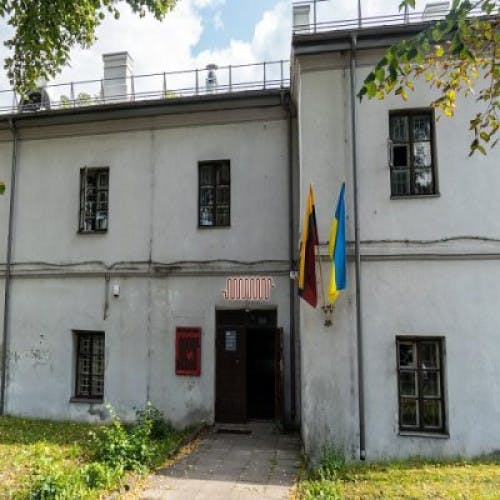The building numbered 1 is located at the confluence of the Neris and Vilnia rivers, in T. Kosciuškos Street, and is a former detention centre. The last detainees were released in August 2019.
According to old historical sources, the site of this building used to be a manor belonging to the noblemen of the Grand Duchy of Lithuania, the Chodkevičius. In the 16th and 17th centuries, it was ruled by another family - Sanguška. In the 18th century, the manor changed hands.
Brick buildings were erected here in the second half of the 18th century. At the beginning of the 19th century, the Tsarist Russian authorities expropriated this building and the whole estate from the last owner of the estate, Jonas Chodasevičius. Soon after, the occupying authorities turned Gediminas Hill and the surrounding area into a military fortress and adapted this building for military use.
In the beginning, it was used as a barracks, and later a prison for political prisoners. During the uprising of 1863-1864, more than 1 000 people spent their days in captivity here. 8 of the 21 rebels sentenced to death were also imprisoned here. After the executions in Lukiškės Square, their bodies were buried on Gediminas Hill, hiding them from the public.
The purpose of the building remained unchanged until autumn 2019, when it was used as a detention centre. The only thing that changed were its owners: before the First World War, the military of Tsarist Russia, then the police of Poland and Nazi Germany, the Soviet militiamen and finally the stewards of the regained freedom of Lithuania. When the last detainees left the building, it was handed over to the Lithuanian National Museum. The museum is now adapting this authentic site for exhibitions.
